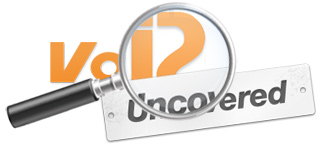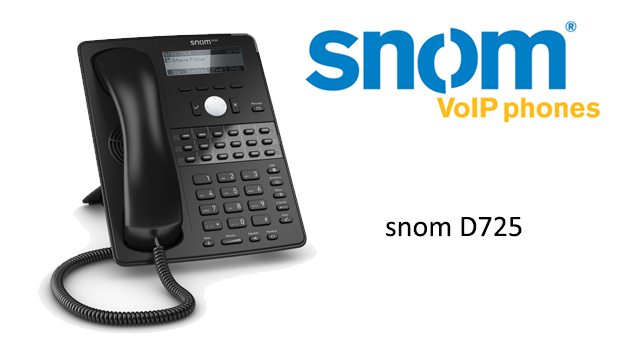Recently, we had the chance to speak with David Rowe from the Free Telephony Project, based out of Australia, and Elektra Aichele from Freifunk.net Wireless Community Network in Germany.
Elektra and David came together about eight months ago to work on the Village Telco Project, a project to give low cost, Wi-Fi based telephony to people in the developing world.
They’ve been working as a team to develop one component of the project, called the Mesh Potato. The Mesh Potato is a Wi-Fi router with telephony that does mesh networking.
Elektra is the project’s Mesh Networking Guru and David is the telephony hardware person and actually Elektra is actually used the Mesh Potato to speak with us.
Listen to the podcast or read a summary of our call, below:
[VoIPon]: VoIPon has a great admiration and respect for open source projects. What’s particularly interesting about the Free Telephony Project is that it is not only based on open source software but the hardware is also entirely open, making the entire solution Free (as in speech). What made you start this project and what would you say was the most challenging part of it?
[David Rowe]: Well, I started the project back in 2005. The main reason was, just like a lot of projects, I had an itch I wanted to scratch. I was fascinated by the idea of doing embedded Asterisk device, a telephony product, that didn’t need a computer to make it run that would run standalone like an appliance. It had been an idea kicking around in my head for a few years, and I came across a chip the analog devices Blackfin, that was perfect for the job and I started working on the thing, evenings and nights, and eventually it turned into a full time occupation.
The idea of open hardware was, well I guess, I started as closed hardware/open software project, but I just felt like doing something a little different and um, the idea of open hardware got put into my head, through the Blackfin community. The CPU I’m using had released some open hardware designs and I thought, well let’s try to do the whole PBX system open hardware and see where it leads. I really like experimenting and playing with new ideas, and that’s just made it so much more fun and rewarding, making it open hardware.
In terms of challenging, to be honest, looking back it’s been nothing but fun. [Laughs] There’s been some hardware and software and people-ware issues, like any other project but the only thing that’d I’d say I haven’t done that I’ve found really challenging, that I really have a desire to use this project to help people in the developing world. And, um, with the Free Telephony Project hardware, the IPO4, the IPO1, etc., while they’ve been a big hit in the first world, I haven’t been able to use them to help thousands and thousands of people in the developing world and that’s a desire I still wish to fulfill, which is why I’m working on the Village Telco Project, in particular, the Mesh Potato.
[VoIPon]: Can you tell us anything more about the Free Telephony Project and what new hardware we might expect to see over the coming months?
[David Rowe]: Main my main activities have been over the last 13 months, have been developing the Mesh Potato. And we’re going to take that from Beta into a full production unit. Something that can run outdoors, it’s being made robust against environmental and human damage type conditions. So that will be the next big release.
That of course is a project I’m collaborating with other people. It’s being funded by the Shuttleworth Foundation and we’re working with a company called Atcom for the hardware manufacture. Um, in terms of the VoIP hardware coming out of the Free Telephony Project, that’s really taken on a life of its own, and I don’t have a lot to do with developing VoIP projects on a day-to-day basis. Um, but to be honest, I think that’s how it should be. I kicked off the project, I injected these free designs into the open source community and now people are running with them. There must be 20 or 25 derivative designs that have been released now from the small start we made four or five years ago. And that’s very satisfying for me.
My current interests for the free telephony project are addressing ease of use issues. We developed a great little hardware platform, that’s very low cost, but it’s still as hard to use as a full size Asterisk box. And, unless you’ve got Asterisk and Linux skills, that can be quite difficult to set up. So, I’m playing with this theme of ease of use. Can we make an Asterisk box as easy to set up as say a Wi-Fi router? So it’s software that I’m playing with at the moment, in particular, the ease of use idea.
[VoIPon]: If creating an entirely open based PBX was not enough we and a number of VoIPon customers are very impressed with the OSLEC open source high performance line echo canceller you have put together. What made you start this project and what were the main difficulties you experienced when developing OSLEC?
[David Rowe]: Well thank you. I’m very happy with the way OSLEC has turned out. The reason I started it was that I needed an echo canceller that would work with the IPO4, that’s the open hardware PBX that I played a part in developing. Asterisk, for many, many years had a big problem with software echo cancellation. And to be fair, echo cancellers are quite difficult to develop. You need some fairly specialized skills. So I decided to try an open source approach to developing an echo canceller.
As background, I have education in digital signal processing or DSP, so I understood the basics of echo cancellation. I, myself, had tried to build one several times over the past 15 years and had failed, so I realized what a challenge it would be.
So I tried something different. I set up a way, so a prototype echo canceller could be tested in live Asterisk boxes. And that I could sample all the signals flowing to and from the echo canceller and get those samples emailed back to me in the form of wave files.
Now what this let me do, was access many, many alpha and beta testers. Then take the results of their tests and feed them back into my development system here. So it was just like I had the ability to fly to Canada, and make a phone call on a Canadian phone line. Find out something that had failed, then take it back here and tested.
This was a real open source process that could never have happened in a closed source organization. The results were predictably, very fast development, very high quality code, and it’s currently in use by tens, if not hundreds of thousands of people around the world with very few problems with those that are using it.
[VoIPon]: Can you tell us a little about the Mesh Potato Project, what it is and who should be using it and how viable it is?
[Elektra Aichele]: Well the background is I actually met David in 2008 at a workshop in Capetown organized by the Shuttleworth Foundation 2008. I also met Steve Song who is directing this project. The idea is telephony for the developing world, and together with Wi-Fi, so we don’t have infrastructure, and a quick way to roll out infrastructure is to use wireless technology. And probably Mesh Technology, I bet you’re not familiar with the term.
Mesh Technology is: the Wi-Fi devices, some of them, they can operate in multi-point to multi-point peer to peer mode, so they can form a mesh and that way every node, every device acts as a relay station for all of the others in order to extend the range and the coverage of the network.
And the Mesh Potato is a wireless ATA. It’s the first wireless ATA on the market that can do Mesh Networking. So it’s intended to be placed on roofs in the developing worlds. It’s organizing itself, organizing a wireless network. And give good coverage by repeating the signal from station to station if necessary. And it features Asterisk as well.
David, you can jump in if you’d like to see some additions.
[David Rowe]: You’re doing a fine job, Elektra.
[VoIPon]: How do you guys see the market developing for these projects?
[David Rowe]: Perhaps, I’ll go first Elektra. The primary aim of the Village Telco and the Mesh Potato is to help people get low cost telephony in the developing world. So we’re looking at entering very high volume manufacture over the next 6 – 24 months.
There’s also some possibilities for the product in the first world. What we’ve got with the Mesh Potato and the Village Telco System is a way to roll out telephone networks based on Wi-Fi and very, very quickly. Um, you can switch on a Mesh Potato, tell it what its phone number is and be making phone calls within a minute.
So imagine a disaster situation like Haiti. You can deploy 1000 of these, set them up with a small battery and solar panel and you can have instant IP telephony connectivity across a disaster area. So we see quite a strong first world market as well.
Plus, there are a lot of people who really are interested in the community telephony aspect of Village Telco and Mesh Potato—the idea that you don’t need to rely on a phone company or even an ISP for your internet connectivity. I have people in my neighbourhood who’d like to use this to get around the existing phone companies if they could.
So there are quite a few different markets in both the first and the third world for the Village Telco and the Mesh Potato.
[VoIPon]: So Elektra, is there anything you’d like to add?
[Elektra Aichele]: I think we tried to do something like the OPC project did for the education of kids. Mesh Potato is a device that could help people build and deploy wireless infrastructure everywhere on the planet, and in particular areas with rough environment. We have spent a considerable amount of effort to make this, as robust as possible.







